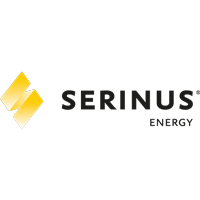Serinus Energy plc (LON:SENX) Chief Executive Officer Jeffrey Auld caught up with DirectorsTalk to discuss the production results from the M1008 well, any challenges created by COVID, the next steps to bring the well onto production and plans for the rest of the year.
Q1: You’ve released the results of your M1008 production well earlier, the well flowed for 4 million standard cubic feet per day, is that what you expected?
A1: Yes, that’s right in line with our expectations, the well penetrated four different zones and we only tested two so the well came in right along the lines of what we were expecting. I think you can always want more but 4 million standard cubic feet a day is a good strong production well and very very good economics out of that well.
Q2: What sort of challenges did COVID restrictions create for the project?
A2: Well, aside from the challenge of the executive team having to drill a well very far away from our home offices, the pandemic continues to cause what I would consider low level minor delays but there’s lots of them. Things like having to have drilling crews segregated so that you have two separate crews so that one crew can’t infect an other if someone gets infected. Simple things like having provisions, food, and water up to an operating site without having a whole bunch of people to deliver and potentially cause infection at the site. So, it’s all sorts of little things like that that add up and they cause incremental small delays, like I say, they can add up.
For this well, we actually had more delays from weather than we had from the pandemic. Like most of Europe, Romania had very very cold weather, abnormally cold weather, we had some ice storms where it was freezing rain and froze all of the equipment so it just became unsafe to work, it was so icy.
So, actually the pandemic causes some small low level interruptions but on this particular well, we really got caught out by abnormally cold weather.
Q3: What are the next steps then to bringing the well onto production?
A3: Right now, on the well site, there’s a whole bunch of trucks and equipment for testing so we will demobilise those and move those off. There’s a flow line that’s been constructed that goes 1 kilometre/1.5 kilometres to the Moftinu gas plant, the last leg of that needs to be trenched in under where all the testing equipment is currently. We can’t trench through the operating platform until all of our operations are done.
So, we’ll move all of that testing equipment out of the way, we’ll trench that last little segment of the flowline that goes back to the gas plant, fill that line with nitrogen and pressure test it to make sure it’s all safe and secure and then the well should be tied back for production. A very short tie back because the majority of the work is all done but there’s that necessary step of getting the 50/60 metres across the drilling platform to the well head that we’re working on right now.
Q4: I guess that leads me onto plans for the rest of the year?
A4: This is a great start to the year, we’ve got a good strong producing well, it was drilled under budget, we’re just finalising all the costs right now but we’re quite a bit under budget so a good strong operational start.
In Romania, in the second half of this year, we’re looking to drill another well, immediately the team will transition to getting the permits, looking at the surface construction, access roads and drilling platform for a well we call the Sancrai-1 well which we’ll drill in the second half of this year. The permitting needs to be done on that so whenever you’re permitting with a government, there’s some variability in timings so as we get closer to the dates, we’ll announce those, right now that’ll be in the second half. We’re also looking at putting upstream compression onto the Moftinu gas field to hold the production higher for longer.
Of course, we’re busy working in Tunisia right now with a pump programme, a workover programme, and again, towards the middle of the year, the second half of this year, we hope to be putting pumps into our big Sabria field and seeing if we can enhance and increase the production there.
So, it looks like a pretty busy year operationally, the Romanian team have to transition quite quickly into another well and the Tunisian team is busy at work trying to put pumps in place and increase production there.


